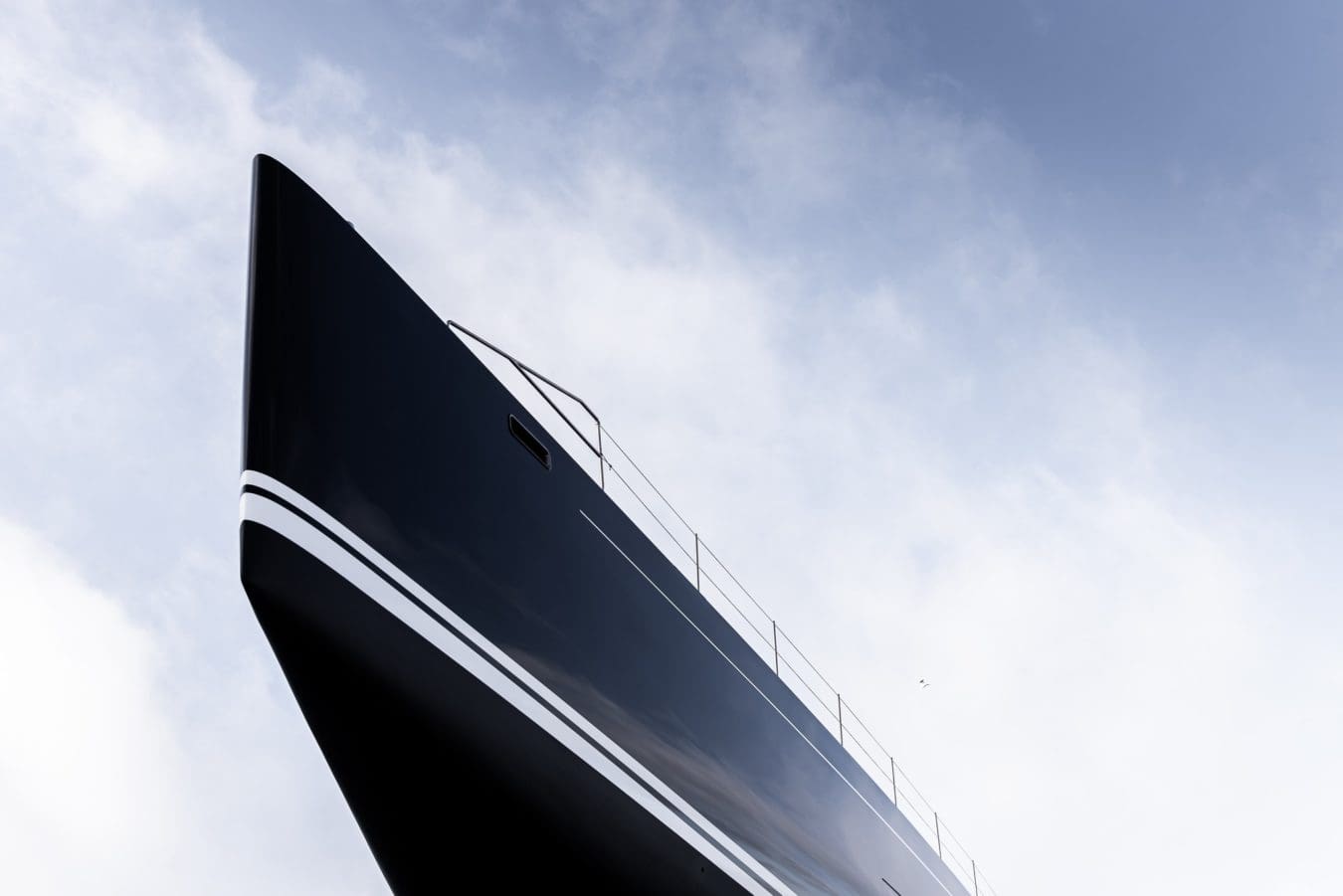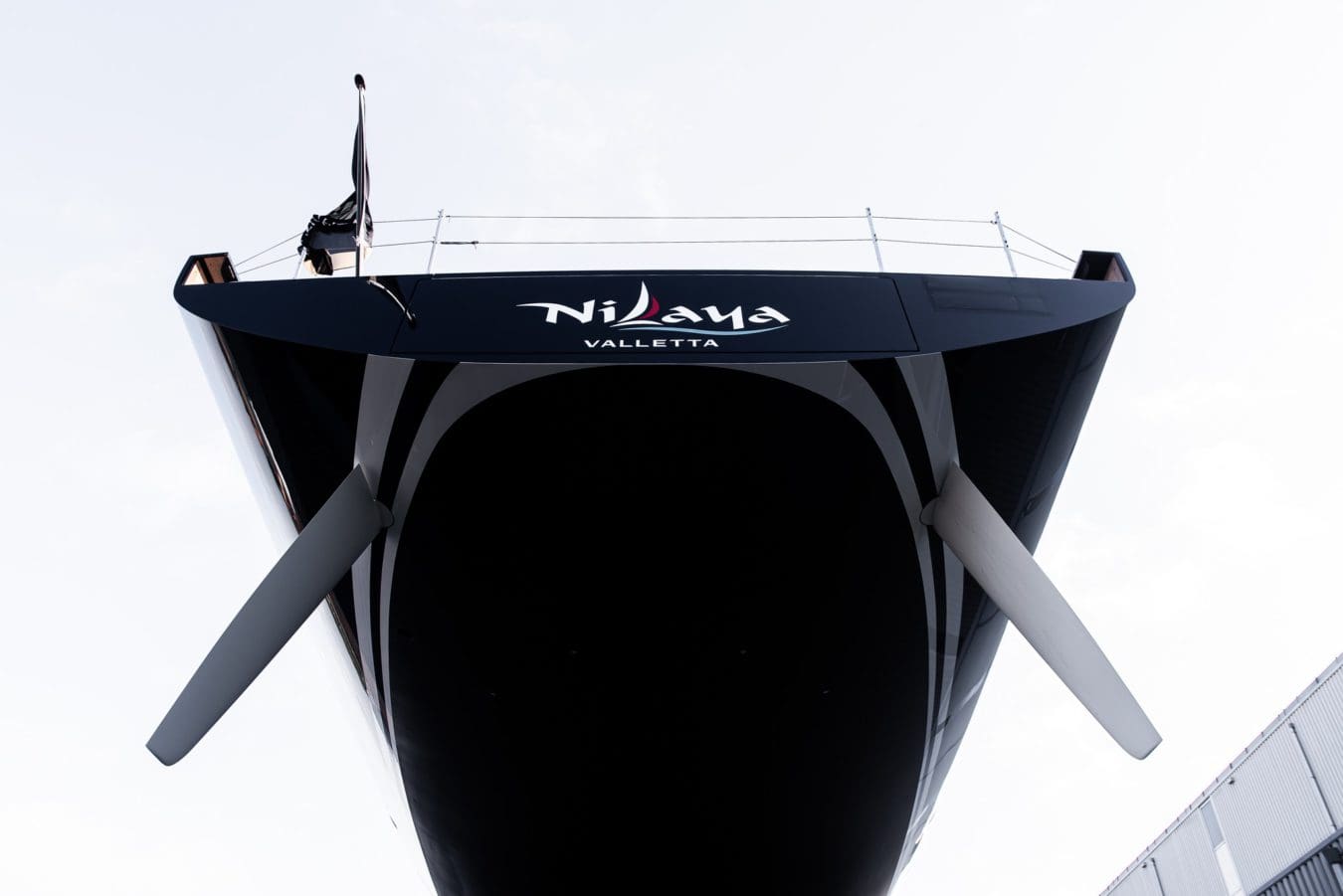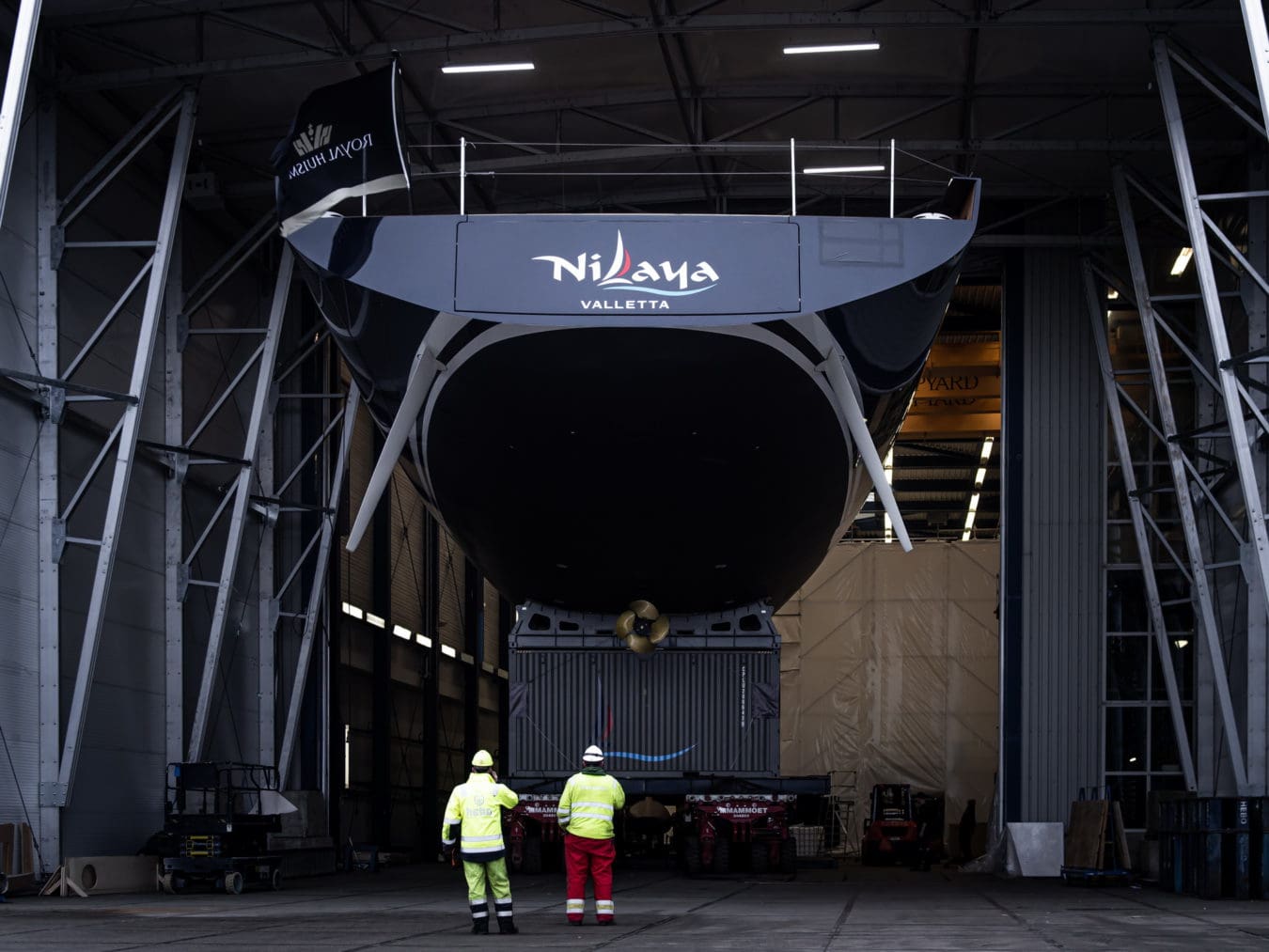The highly anticipated Reichel Pugh/Nauta designed Project 405 is nearing completion at Royal Huisman – the first superyacht of its kind to utilise Royal Huisman’s new Featherlight design and production method. The Dutch yard recently confirmed it had achieved its goal of weighing 11% less than a typically advanced aluminium superyacht of the same size. Featherlight is not a single process or construction technique but a lightweight holistic approach combining various weight-saving solutions.
For any high-performance cruiser, a carbon fibre mast, boom and standing rigging are critical to keeping weight as low and as centred as possible for optimal balance. While sister company Rondal has considerable carbon spar experience, bringing the design of this component and the sailmaker into this process during the larger hull design phase is a page out of a maxi-racer’s playbook.
Project 405 is the first yacht of this size to take full advantage of Structured Luff sail design, pioneered by Doyle Sails, a choice that allowed the entire Rondal mast, rig and components to be lighter – a key point considering the yachts Panamax air draft.



Nilaya echos the look of the owner’s previous highly successful maxi-racer of the same name with a low profile and straight bow, wide transom and twin rudders and a high-performance sail inventory to match, including a Doyle Mainsail, Structured Luff Blade, J4, Staysail/J5, and Code Zero.
All sails have been designed by world-class designer Richard Bouzaid and constructed at Doyle Sails New Zealand from Stratis 1100 CT providing unmatched flexibility in fibre orientation, placement accuracy, and superior lamination. All fibres are designed to be load-bearing, especially in the structured luff lenses, converging to every load point on the sail.
Custom-designed Doyle sails allow for a layout that produces stronger, lighter and faster sails that are smoother when set. Stratis 1100 CT sails hold their shape better with significantly less stretch, lasting longer than any other alternative on the market. Carbon and Technora fibres are used in conjunction with specific resins, which have been selected for their long-term durability and resistance to fatigue.
Doyle Sails Grand Prix expert, Stu Bannatyne, has been involved with various projects with the same owner for several years and has been the sailmaker link alongside the designers throughout this revolutionary project.
ABOUT DOYLE SAILS // Around the world, Doyle Sails has over 500 sailmakers in 46 different locations, all equally passionate about sailing – living and breathing our ethos ’Global Leaders and Local Experts.’
As sailors, our obsession with sailing connects us to the water. The water is our playground, a sanctuary where we seek enjoyment, a competitive playing field where we race as competitors; it’s sometimes our home and always a place that unlocks our sense of adventure wherever that adventure might take us. Behind every adventure is a Doyle sailor who shares this same obsession as you. We put your journey at the very heart of what we do to deliver the ultimate enjoyment and performance, powering our constant need to push the boundaries in sail design and innovation, to reimagine sailing.
From dinghies, club racers and cruising yachts through to Grand Prix campaigns and Superyachts, we are your experts. Meet our team here.
Experts of article taken from Royal Huisman; all image credits are Tom van Oossanen.
